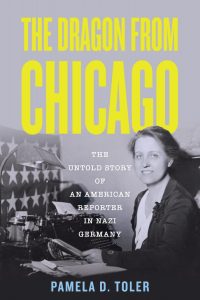A different path to being a war correspondent aka the woman on the spot
The Great War provided new opportunities for women journalists.*
No women received official press accreditation with the American Expeditionary Force (AEF) during World War I, but a number of female journalists reached the front as “visiting correspondents.” Soon after the war began, the Saturday Evening Post, which had the largest circulation of any American magazine at the time, sent popular novelists Cora Harris and Mary Roberts Rinehart to Europe as reporters. (Rinehart was the first journalist to visit the frontline trenches.) Freelancers, veteran newspaperwomen, reporters for women’s magazines like Good Housekeeping and Ladies’ Home Journal, and journalists with assignments from general interest magazines, like Scribner’s and Collier’s, followed in their footsteps.
At the same time, two women who were already reporting from Europe, May Birkhead of the New York Herald and Carolyn Wilson of the Chicago Tribune, added war correspondent to their job description. Both wrote society and fashion news from Paris before the war.**

Birkhead, a seamstress who stumbled into a thirty-year career as a journalist with a firsthand account of the sinking of the Titanic, wrote feature stories about the war and later reported on the Versailles peace conference. She earned a commendation from General John Pershing for her work.

Wilson, who continued to write her illustrated fashion column throughout the war, filed thoughtful political analyses, human interest stories about American soldiers in the trenches, and reported pieces from both sides of the front. The Tribune described her war reporting as “the news of the battle front as a woman sees it.” She became the subject of the news rather than a reporter in 1915, when she was briefly imprisoned in Berlin on suspicion of espionage.
(To my surprise, another Chicago Tribune reporter followed Carolyn Wilson’s path in World War II, though with somewhat less verve. Anne Bruyere, like Birkhead and Wilson, was a fashion reporter in Paris when the war broke out. While she did not make it to the front, she reported on conditions in occupied Paris and later on the experiences of American soldiers, WACS, and Red Cross volunteers in liberated Paris—all the while reporting on French fashion.)
*If you want to dive more deeply into this topic, I highly recommend Chris Dubbs’ An Unladylike Profession: American Women War Correspondents in World War I
**This type of writing is a type of foreign correspondence in its own right though it is seldom treated as such, precisely because it was aimed at women and therefore not to be taken seriously
My publisher is giving away 25 copies of The Dragon From Chicago on Goodreads. You can sign up here through July 4. Good luck!





